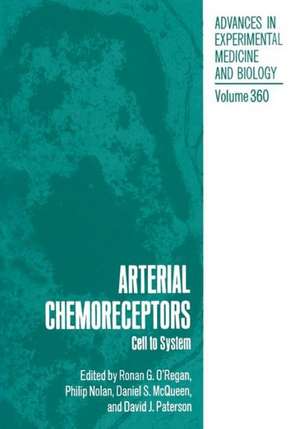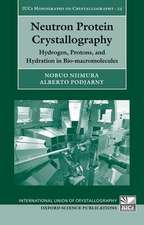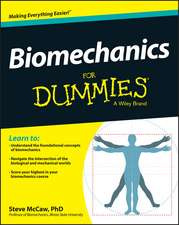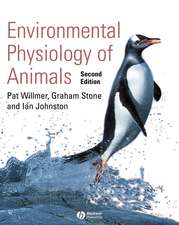Arterial Chemoreceptors: Cell to System: Advances in Experimental Medicine and Biology, cartea 360
Editat de Ronan G. O'Regan, Philip Nolan, Daniel S. McQueen, David J. Patersonen Limba Engleză Paperback – 24 oct 2012
Din seria Advances in Experimental Medicine and Biology
- 9%
 Preț: 719.60 lei
Preț: 719.60 lei - 20%
 Preț: 691.93 lei
Preț: 691.93 lei - 5%
 Preț: 717.00 lei
Preț: 717.00 lei - 5%
 Preț: 716.28 lei
Preț: 716.28 lei - 5%
 Preț: 717.20 lei
Preț: 717.20 lei - 15%
 Preț: 640.24 lei
Preț: 640.24 lei - 5%
 Preț: 1113.83 lei
Preț: 1113.83 lei - 5%
 Preț: 715.71 lei
Preț: 715.71 lei - 5%
 Preț: 820.43 lei
Preț: 820.43 lei - 15%
 Preț: 641.38 lei
Preț: 641.38 lei - 5%
 Preț: 716.28 lei
Preț: 716.28 lei - 5%
 Preț: 523.99 lei
Preț: 523.99 lei - 5%
 Preț: 1031.00 lei
Preț: 1031.00 lei - 5%
 Preț: 717.00 lei
Preț: 717.00 lei - 5%
 Preț: 715.35 lei
Preț: 715.35 lei - 20%
 Preț: 1161.71 lei
Preț: 1161.71 lei - 5%
 Preț: 1170.51 lei
Preț: 1170.51 lei - 18%
 Preț: 1119.87 lei
Preț: 1119.87 lei - 5%
 Preț: 1288.48 lei
Preț: 1288.48 lei - 5%
 Preț: 1164.67 lei
Preț: 1164.67 lei - 5%
 Preț: 1101.73 lei
Preț: 1101.73 lei - 18%
 Preț: 1123.67 lei
Preț: 1123.67 lei - 5%
 Preț: 1435.64 lei
Preț: 1435.64 lei - 20%
 Preț: 1044.10 lei
Preț: 1044.10 lei - 18%
 Preț: 946.39 lei
Preț: 946.39 lei - 5%
 Preț: 292.57 lei
Preț: 292.57 lei - 18%
 Preț: 957.62 lei
Preț: 957.62 lei - 18%
 Preț: 1235.76 lei
Preț: 1235.76 lei - 5%
 Preț: 1231.55 lei
Preț: 1231.55 lei - 5%
 Preț: 1292.30 lei
Preț: 1292.30 lei - 5%
 Preț: 1102.10 lei
Preț: 1102.10 lei - 18%
 Preț: 1132.81 lei
Preț: 1132.81 lei - 5%
 Preț: 1165.19 lei
Preț: 1165.19 lei - 5%
 Preț: 1418.48 lei
Preț: 1418.48 lei - 5%
 Preț: 1305.63 lei
Preț: 1305.63 lei - 18%
 Preț: 1417.72 lei
Preț: 1417.72 lei - 18%
 Preț: 1412.99 lei
Preț: 1412.99 lei - 24%
 Preț: 806.16 lei
Preț: 806.16 lei - 18%
 Preț: 1243.29 lei
Preț: 1243.29 lei - 5%
 Preț: 1429.44 lei
Preț: 1429.44 lei - 5%
 Preț: 1618.70 lei
Preț: 1618.70 lei - 5%
 Preț: 1305.12 lei
Preț: 1305.12 lei - 18%
 Preț: 1124.92 lei
Preț: 1124.92 lei - 5%
 Preț: 1097.54 lei
Preț: 1097.54 lei - 15%
 Preț: 649.87 lei
Preț: 649.87 lei - 5%
 Preț: 1097.54 lei
Preț: 1097.54 lei - 18%
 Preț: 945.79 lei
Preț: 945.79 lei - 5%
 Preț: 1123.16 lei
Preț: 1123.16 lei
Preț: 381.17 lei
Preț vechi: 401.24 lei
-5% Nou
Puncte Express: 572
Preț estimativ în valută:
72.93€ • 76.43$ • 60.30£
72.93€ • 76.43$ • 60.30£
Carte tipărită la comandă
Livrare economică 12-26 aprilie
Preluare comenzi: 021 569.72.76
Specificații
ISBN-13: 9781461360995
ISBN-10: 1461360994
Pagini: 420
Ilustrații: XV, 400 p.
Dimensiuni: 178 x 254 x 22 mm
Greutate: 0.73 kg
Ediția:Softcover reprint of the original 1st ed. 1994
Editura: Springer Us
Colecția Springer
Seria Advances in Experimental Medicine and Biology
Locul publicării:New York, NY, United States
ISBN-10: 1461360994
Pagini: 420
Ilustrații: XV, 400 p.
Dimensiuni: 178 x 254 x 22 mm
Greutate: 0.73 kg
Ediția:Softcover reprint of the original 1st ed. 1994
Editura: Springer Us
Colecția Springer
Seria Advances in Experimental Medicine and Biology
Locul publicării:New York, NY, United States
Public țintă
ResearchCuprins
Eric Neil: An Appreciation.- International Meetings on Chemoreceptors: Historical Perspectives.- Oxygen Sensing in the Carotid Body: Ideas and Models.- Ionic Channels in Type I Carotid Body Cells.- Role of Intracellular pH and [Ca2+]iin Acid Chemoreception in Type I Cells of the Carotid Body.- Neurotransmitters in the Carotid Body.- Reflexes Arising from the Arterial Chemoreceptors.- Central Integration of Chemoreceptor Afferent Activity.- Chemoreceptor Function in the Fetus and Neonate.- The Role of Arterial Chemoreceptors in Ventilatory Acclimatization to Hypoxia.- Chemosensitivity from the Lungs of Vertebrates.- Heymans’ Visit to Dublin to Review “Buffer” Nerve Experiments.- A Belated Centennial Tribute to Corneille Heymans.- Glomera that are not Chemosensitive.- Electrotonic Coupling Between Carotid Body Glomus Cells.- CO-binding Chromophores in Oxygen Chemoreception in the Carotid Body.- Actions of Nicotinic Agonists on Isolated Type I Cells of the Neonatal Rat Carotid Body.- Ca2+-Activated K+-Channels from Isolated Type I Carotid Body Cells of the Neonatal Rat.- Culturing Carotid Body Cells of Adult Cats.- Plasticity in Cultured Arterial Chemoreceptors: Effects of Chronic Hypoxia and Cyclic AMP Analogs.- Carotid Body Chemoreception: Role of Extracellular Ca2+.- Cytosolic Calcium in Isolated Type I Cells of The Adult Rabbit Carotid Body: Effects of Hypoxia, Cyanide and Changes in Intracellular pH.- Characterization of Membrane Currents in Pulmonary Neuroepithelial Bodies: Hypoxia-Sensitive Airway Chemoreceptors.- Ionic Currents on Endothelial Cells of Rat Brain Capillaries.- Urokinase and its Receptor: Markers of Malignancy?.- Electrochemical Measurement of Rapid Dopamine Release in Perfused Cat Carotid Body during Onset of Hypoxia.- Hypoxia-InducedCatecholamine Release from Rat Carotid Body, In Vitro, during Maturation and following Chronic Hypoxia.- Assessment of Na+ Channel Involvement in the Release of Catecholamines from Chemoreceptor Cells of the Carotid Body.- Activation of GTP-binding Proteins by Aluminum Fluoride Modulates Catecholamine Release in the Rabbit Carotid Body.- Catecholamines in the Rabbit Carotid Body: Content And Secretion.- Cholinergic Aspects of Carotid Body Chemotransduction.- Low PO2 Dependency of Neutral Endopeptidase and Acetylcholinesterase Activities of the Rat Carotid Body.- Nitric Oxide Synthase Occurs in Neurons and Nerve Fibers of the Carotid Body.- NO Mimics O2 in the Carotid Body Chemoreception.- Mechanisms of Carotid Body Inhibition.- Proportional Sensitivity of Arterial Chemoreceptors to CO2.- Effects of Expiratory Duration on Chemoreceptor Oscillations.- Effects of Intravenous Infusions of KCl and Lactic Acid On Chemoreceptor Discharge In Anaesthetized Cats.- The Effect of Intravenous Infusion of Lactic Acid on Carotid Chemoreceptor Discharge in Anaesthetized Cats Ventilated with Room Air or 100% O2.- The Carotid Bodies as Thermosensors: Experiments in vitro and in situ, and Importance for Ventilatory Regulation.- Inhibition of Ventilation by Carotid Body Hypocapnia during Sleep.- Metabolic Acid-Base Status and the Role of Carotid Chemoreceptors in Hyperoxic Breathing.- Ventilatory Responses to Histotoxic Chemostimulation in Hypoxia Adapted Rats.- Chemoreflex Sensitization Augments Sympathetic Vasomotor Outflow in Awake Humans.- Carotid Chemoreceptor Control of Vascular Resistance in Resting and Contracting Skeletal Muscle.- Substance P Inhibits Ventilation in the Goat.- Central Glutamate and Substance-P in the Hypoxic Ventilatory Response.- Carotid Chemoreceptor Activity and Heart Rate Responsiveness to Hypoxia after Inhibition of Nitric Oxide Synthase.- Effects of Endothelins on Respiration and Arterial Chemoreceptor Activity in Anaesthetised Rats.- Changes in Blood Glucose Concentration in the Carotid Body Modify Brain Glucose Retention.- Is the Second Carotid Body Redundant?.- Activity of Cardiac Vagal Preganglionic Neurones during the Pulmonary Chemoreflex in the Anaesthetized Cat.- Trophic Regulation of Carotid Body Afferent Development.- Carotid Body Dopamine Response to Acute Hypoxia in Developing Rabbits.- Attenuation of the Hypoxic Ventilatory Response in Awake Rabbit Pups; Possible Role Of Dopamine.- D2-Dopamine Receptor mRNA in the Carotid Body and Petrosal Ganglia in the Developing Cat.- The Role of Endogenous Dopamine as an Inhibitory Neuromodulator in Neonatal and Adult Carotid Bodies.- Intracellular Calcium Responses to Hypoxia and Cyanide in Cultured Type I Cells from Newborn and Adult Rabbits.- Effects of Acetazolamide on the Time Course of the CO2 Response of Carotid Body in the Newborn Kitten.- Cardiovascular Responses to Hypoxia in Developing Swine.- Fetal Reflexes in Chronic Hypoxaemia.- Is the Rapid and Intense Peripheral Vasoconstriction Occurring during Acute Hypoxaemia in the Llama Fetus an Arterial Chemoreflex?.- Is the Ventilatory Decline Seen in Newborns during Hypoxaemia Centrally Mediated?.- Postmortem Changes in the Human Carotid Body.- Effects of Various Diseases upon the Structure of the Human Carotid Body.- Modification of the Rabbit Carotid Body Type I Cell Mitochondria by High Altitude Exposure and the Effects of Dracocephalum Heterophyllum.- Breathing Frequency and Tidal Volume are Independently Controlled in Garter Snakes: The Role of CO2-Rise Time.- Effects of Chronic Hypoxia on Rat Carotid Body andToad Carotid Labyrinth Glomus Cells.- The Stimulus Modality of the Hypoxic Ventilatory Response in Rodents.- Histochemical Demonstration of Carbonic Anhydrase in the Larynx.- Effects of Intralaryngeal CO2 And H+ on Laryngeal Receptor Activity in the Perfused Larynx in Cats.- The Effects of Airway CO2 on Laryngeal Pressure, ‘Drive’ and Cold Receptors in Spontaneously Breathing Cats.- Laryngeal Receptors are Sensitive to Expiratory Concentrations of CO2.- The Effects of Airway CO2 and Cooling on Ventilation and Upper Airway Resistance in Anaesthetized Rats.- The Effects of Laryngeal CO2 and Cooling on Ventilation and Laryngeal Resistance in the Anaesthetized Rat.










